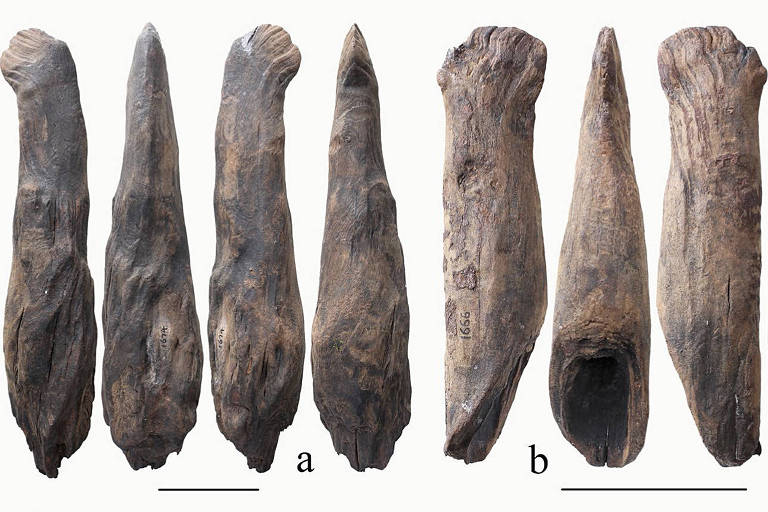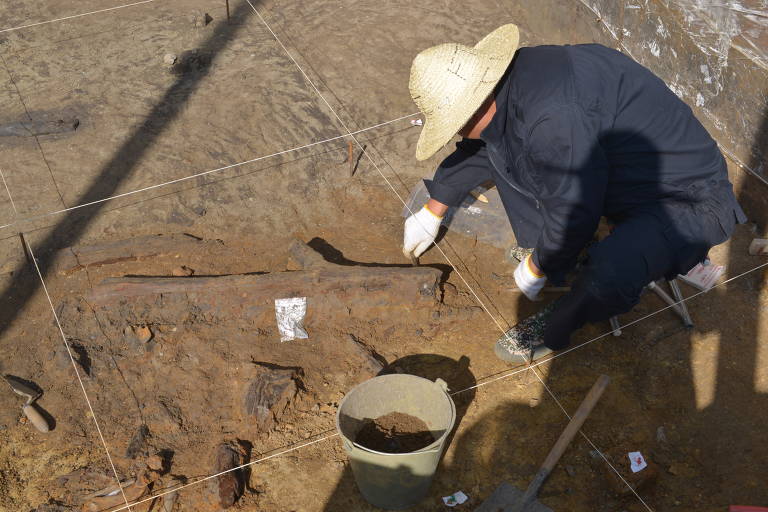Excavation reveals 300,000-year-old wooden tools in China

Apparently, the archaic humans who inhabited southwest China more than 300,000 years ago did not live in the Stone Age — it was more like the "Wood Age" , judging by the diversity of artifacts made from this raw material that they used in their daily lives.
The tools, analyzed in a study published last Thursday (3), surprised archaeologists because they are unlike anything found to date in places inhabited by early humans. However, the discovery at the Gantangqing site may indicate that this rarity is merely the result of preservation problems at other sites, and that wood may have been as important as stone to humanity's ancestors.

Led by Xing Gao, from the Chinese Academy of Sciences, and Bo Li, from the University of Wollongong, in Australia, the research was published in the specialized American journal Science and analyzed a total of 35 wooden implements, with an estimated age between 361 thousand and 250 thousand years.
Both the earliest and most recent dates long precede the process of expansion of modern human beings, or Homo sapiens , from their cradle on the African continent—the first evidence of the presence of the H. sapiens lineage in Africa dates back to around 300,000 years ago.
Everything suggests, therefore, that the makers of the wooden tools were members of more archaic lineages of hominins (the name given to species that are more closely related to us than to modern chimpanzees). They may have been members of the species Homo erectus , still present in the region at that time, or even some of the mysterious Denisovans , a species today best known only by its DNA.
During the Pleistocene (the so-called Ice Age) period, the Gantangqing site was located on the shores of Lake Fuxian, and the layers of lake sediment in which the wooden objects were preserved were rich in organic matter and poor in oxygen. In other words, these were ideal conditions for the instruments, made mainly from pine tree trunks, to be preserved.
Of course, to the eyes of non-experts, the objects could be mistaken for pieces of wood carried by rivers, for example. That's why Gao, Li and their colleagues used clear criteria to determine that they had been intentionally modified by archaic humans.
The list they established in the study has five items: 1) intentional selection of pieces of wood with edges that favored handling; 2) marks that indicate that the wood was reworked to acquire a specific shape; 3) planed surfaces; 4) evidence of use (wear on the edge, for example); 5) polishing. All wooden objects identified as artifacts fit into at least three of these categories.
Most artifacts had modifications at the tips, and early craftsmen removed the bark from the wood before working it.
Among the objects are large sticks, probably used for digging and held with both hands. Others have a much more curious shape, like a hook, made from the interface between the wood of the trunk and the beginning of the roots of a tree.
Finally, there are small instruments (five centimeters long), pointed and diamond-shaped, which could have been used as awls, that is, to open holes in leather and similar materials.
With the exception of the awls, most of the tools were probably used to obtain plant roots and tubers, according to the archaeologists. Both this fact and the raw material itself provide interesting data for understanding the lifestyle of early humans there, especially when compared to that of other hominins.
It turns out that the other rare wooden artifacts of comparable age found so far seemed to correspond to, for example, spears. This reinforced the image of archaic humans as hunters par excellence, but it is unlikely that they did not also include good quantities of vegetables in their diet . The same goes for the use of wood, rather than stone, to make tools.
Most likely, as the discovery in China seems to indicate, preservation bias (i.e. conditions that rarely prevent wood from decomposing) made prehistory at that time a scenario in which the use of stone and hunting predominated, although the real situation was more complex than that.
uol






